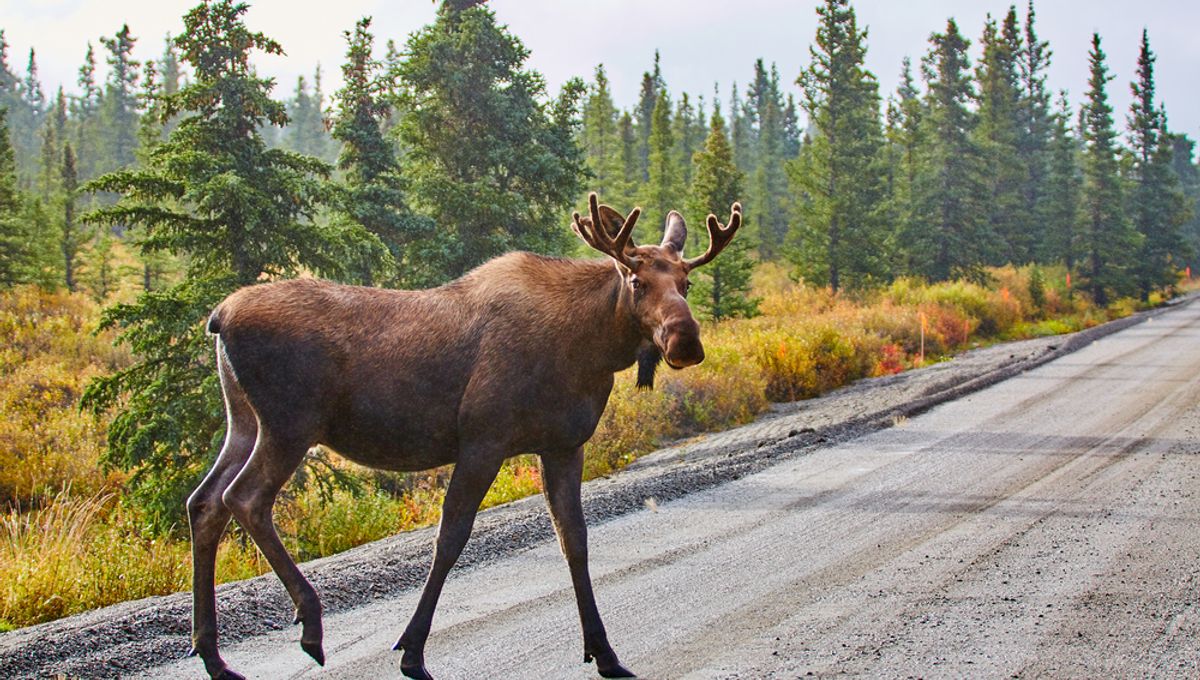
Deers are among the most diverse and adaptable families of mammals, existing in habitats as diverse as the frigid tundras of Svalbard and the rainforests of Borneo. There are 47 known species worldwide, including the muntjac deer (with its downright alien-like flaring scent glands) and the recently discovered Pudella carlae – but which is the largest?
The title for largest deer goes to the moose (Alces americanus), with males measuring 1.8 meters (six feet) from hoof to shoulder and 2.5-3.2 meters (8.2 to 10.5 feet) from nose to tail. It is a hefty animal, tipping the scales at 450 kilograms (1,000 pounds) – making the average male moose as heavy as a grand piano. Adding to this already impressive size is the animal’s enormous antlers, which can grow up to 1.8 meters (6 feet) long.
However, not all moose are made equal and the Alaskan moose (Alces alces gigas) is the biggest of them all. While females are comparatively diminutive, the largest male specimens can weigh as much as 725 kilograms (1,600 pounds). According to the Guinness Book of World Records, the largest of these achieved a whopping 816 kilograms (1,800 pounds) and stood 2.34 meters (7 feet and 8 inches) from hoof to shoulder. Unfortunately, this particular animal met a tragic end in September 1897 when it was shot in Canada’s Yukon Territory.
A relatively common site in the northern United States and Canada, the moose is a source of American pride. Perturbed by claims in Europe that American animals veered towards the smaller side, Thomas Jefferson sent a stuffed moose to the French naturalist Georges-Louis Leclerc, Compte de Buffon.
This solitary creature prefers colder climates, in part because of their large size and in part because of their insulating fur. The name “moose” translates to “eater of twigs” in Algonquin, the language of an indigenous group in North America. This, again, links to their large size. A downside of their height is that eating grass becomes a challenge. Instead, they munch on the leaves, bark, and twigs of trees and shrubs.
Moose are a member of a large family of animals called cervids, a group that includes elk, caribou and muntjacs and are native to all continents bar Australia and Antarctica. Almost all species – with the sole exception of the Chinese water deer – possess (surprisingly fuzzy) antlers, though this is largely a male trait. Female reindeer are the only female deers to sport these accessories, an unusual quirk thought to have evolved to help them to protect food supplies during harsh winters.
Though deers may have a reputation for being shy and fearful, they can be surprisingly dangerous if not treated with care. Indeed, Yosemite National Park recently called mule deer one of the “most dangerous” animals in the park.
While the Alaskan moose may be the largest living example of these mostly vegetarian creatures, it is not the largest known species of deer. The now-extinct giant deer or Irish elk (though it is not technically an elk) was 2 meters (6.5 feet) from hoof to shoulder and possessed antlers three and a half meters (11.5 feet) in width. Based on the fossil record, the deer is thought to have existed in Europe between 400,000 and 8,000 years ago – meaning it would have mingled with our early human ancestors.
Meanwhile, the title for smallest deer goes to the pudu deer. These diminutive critters are found in the forests of Chile and Argentina and are just 73 centimeters (29 inches) tall.
Source Link: What Is The Largest Deer On Earth?